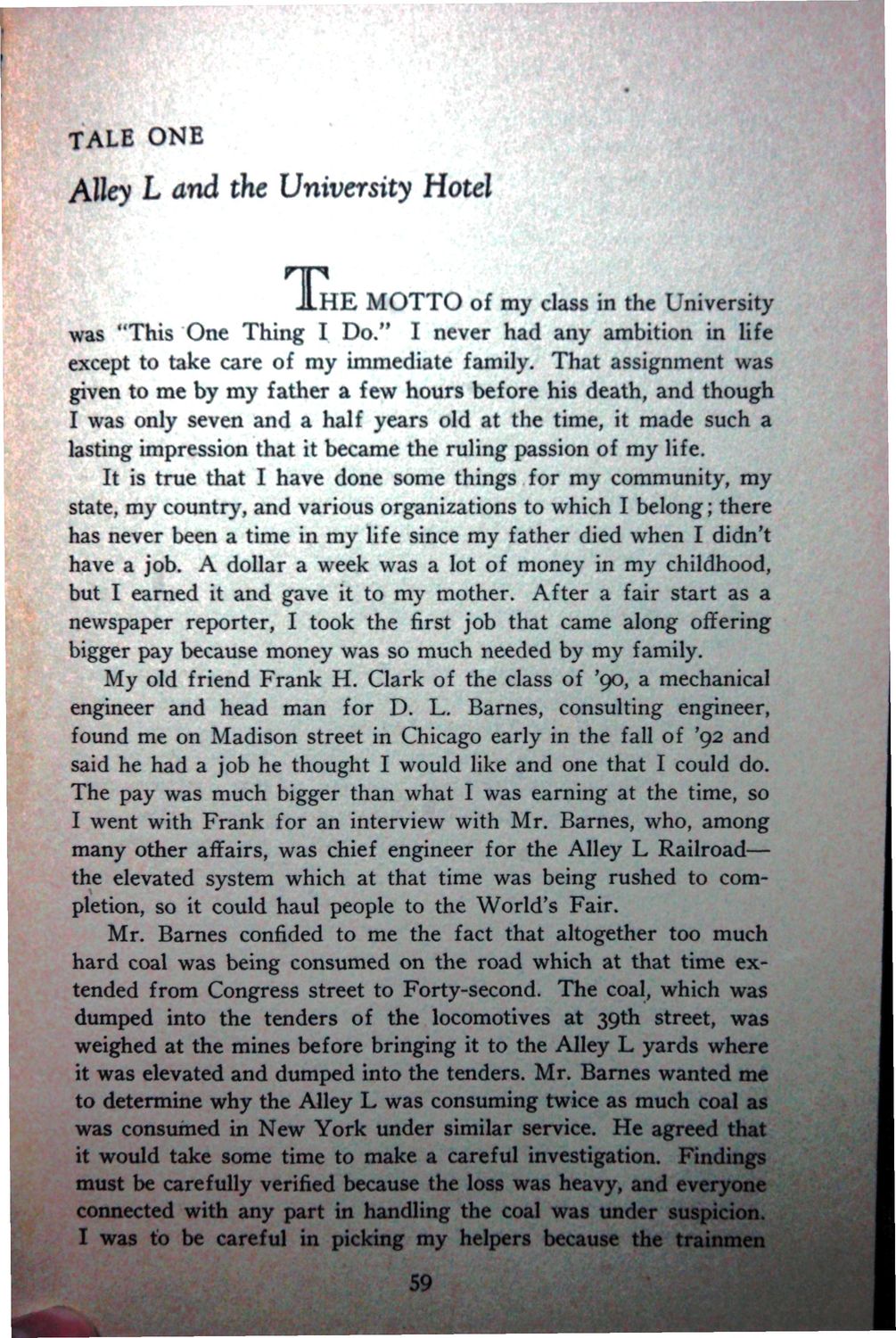| |
| |
Caption: Book - Banks of the Boneyard (Charles Kiler)
This is a reduced-resolution page image for fast online browsing.

EXTRACTED TEXT FROM PAGE:
TALE ONE Alley L and the University Hotel THE MOTTO of my class in the University was "This One Thing I Do." I never had any ambition in life except to take care of my immediate family. That assignment was given to me by my father a few hours before his death, and though I was only seven and a half years old at the time, it made such a lasting impression that it became the ruling passion of my life. It is true that I have done some things for my community, my state, my country, and various organizations to which I belong; there has never been a time in my life since my father died when I didn't have a job. A dollar a week was a lot of money in my childhood, but I earned it and gave it to my mother. After a fair start as a newspaper reporter, I took the first job that came along offering bigger pay because money was so much needed by my family. My old friend Frank H. Clark of the class of '90, a mechanical engineer and head man for D. L. Barnes, consulting engineer, found me on Madison street in Chicago early in the fall of '92 and said he had a job he thought I would like and one that I could do. The pay was much bigger than what I was earning at the time, so I went with Frank for an interview with Mr. Barnes, who, among many other affairs, was chief engineer for the Alley L Railroad the elevated system which at that time was being rushed to completion, so it could haul people to the World's Fair. Mr. Barnes confided to me the fact that altogether too much hard coal was being consumed on the road which at that time extended from Congress street to Forty-second. The coal, which was dumped into the tenders of the locomotives at 39th street, was weighed at the mines before bringing it to the Alley L yards where it was elevated and dumped into the tenders. Mr. Barnes wanted me to determine why the Alley L was consuming twice as much coal as was consumed in New York under similar service. He agreed that it would take some time to make a careful investigation. Findings must be carefully verified because the loss was heavy, and everyone connected with any part in handling the coal was under suspicion. I was to be careful in picking my helpers because the trainmen 59
| |